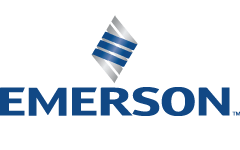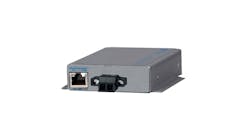Ethernet-APL technology is an important technology milestone, enabling a new high performance paradigm of digital field communications for the process industries. But from a practical perspective, there are millions of analog 4-20 mA instruments installed around the world, and growing. No one will be tearing them out anytime soon. Further these analog devices are joined by a growing number of wireless monitoring instruments that are helping to realize the industrial IoT ambitions of process manufacturers around the world. So. how can all these devices coexist and work together tomorrow and for decades to come? Peter Zornio, chief technology officer for Emerson's Automation Solutions business, joins Keith Larson to discuss the role that HART will play.
Transcript
Keith Larson: The introduction of Ethernet-APL technology earlier this year is an important technology milestone, enabling a new high performance paradigm of digital field communications for the process industries. Its dramatically higher bandwidth and delivery power promise to enable a new generation of far more capable field devices in hazardous and highly distributed locations. And because it's based on Ethernet, it really ultimately promises to unify and dramatically simplify the control and information architecture of tomorrow. But from a practical perspective, there are tens of millions of analog 4-20 mA instruments installed around the world, and their numbers continue to grow daily. No one will be tearing them out anytime soon.
Further these analog devices are joined by a growing number of wireless monitoring instruments that are helping to realize the industrial IoT ambitions of process manufacturers around the world. So how, you may be wondering, can all these devices coexist and work together tomorrow and for decades to come? Well, my name is Keith Larson, editor of Control magazine and controlglobal.com and you're listening to a solution spotlight edition of our "Control Amplified Podcast" sponsored this week by Emerson. To help answer this very important question, I'm happy to be joined by Peter Zornio, chief technology officer for Emerson's Automation Solutions business.
Welcome, Peter. A real pleasure to chat with you today.
Peter Zornio: Hi, Keith. It's always great to talk with you.
Keith: For those of our listeners waiting with bated breath, I'll spill the beans. What 4-20 mA analog, wireless and Ethernet-APL devices have in common is of course the HART protocol. Peter, to start things out, can you maybe recap for our listeners a little bit about the original 4-20 mA HART protocol and how it came to be, and how it's really continued to stay relevant now for what, more than three decades now?
Peter: Sure, Keith. I'm happy to do so, and I have to admit I was there. So, I've been in the industry for a long time and kind of made that question that sort of makes me feel old. But what happened was in the late '80s, mid to late '80s, as intelligent field devices with micro processors were first coming out in the industry, every vendor was also coming out with their own digital protocol to communicate with those intelligent devices. And most of the time the vendors that were doing so were doing it in a relatively closed manner where they were licensing that protocol as a communications between their own systems and their field devices or maybe their own partners in the field device areas. Whereas the industry and the customer base was looking for something that could be used interchangeably across multiple vendors.
So, Rosemont, which is now of course part of Emerson and has been for a long time, actually pioneered the HART protocol at that time as their open digital protocol, because Rosemont was a big instrument vendor, but really did not have a large presence in the system side. So, they were really looking to promote something that the instrument community would see as an open protocol for communication with control systems. And one of the things that I think they did from a technical point of view that was very smart was they added the HART protocol as a digital signal that was superimposed over the existing, very ubiquitous 4-20 mA communication signal for the measurement signal and for the control signal.
So basically, you got digital information in addition to the 4-20 control signal, which made it so that all the systems that were in place, all the, you know, local displays that were in place, you know, an instrument, text, current meter, all those things still work, you just had the opportunity to take advantage of this extra digital information. And that got picked up pretty rapidly by a number of other instrument vendors who were looking for anything that was, you know, open and ubiquitous to use, not tied to one particular system vendor. And then we also started a very specific effort to develop an official standard for a protocol. Well, we might mention that again, you know, in the future, which is the Foundation Fieldbus protocol standard. But by then, the HART protocol was kind of up and running in its ability to operate in any installed base control system and the ease that it brought in terms of not disturbing existing work processes had kind of let it build up a big head of steam.
And then, in the last 20 years or so, all the system vendors have come out with much more flexible IO solutions that allow HART devices to get some of the same benefits of the reduced wiring and the installation characteristics that Foundation Fieldbus would be. So, that's also increased the level of HART adoption that we see and it kind of cemented HART as the de facto standard for field devices. And then last but not least, you know, about 2006 or so, 2007, the digital wireless version of HART became a standard, and it's achieved some good usage as a wireless standard. And that's considerably different than the 4-20 standard because that one's actually all-digital. Obviously, there's no 4-20 signal over the airways.
Keith: Right, right. Yeah. So, do you think that that kind of continuity of work processes is partly what caused maybe Foundation Fieldbus and other field alternatives to underachieve back around the turn of the century?
Peter: Yeah. I think if we look back, as I talked to customers, certainly everyone liked the idea of an all-digital field communication protocol. They liked the idea of the multi-drop and the potential wiring savings that Foundation Fieldbus came to bring. But what they found when they actually went into doing installation was that it required significant retraining of their workforce, it required additional engineering hours at the upfront design part, and that they needed, you know, smarter technicians to come and troubleshoot when something went wrong with the Fieldbus technology. Or maybe not smarter, maybe I should use more well-trained, actually, that I hear from customers a lot is, you know, an instrument technician can work on a HART device, it takes a control system technician to work on Foundation Fieldbus.
So, Foundation Fieldbus technology works. It works very well. Emerson was certainly one of the big supporters of it when it was first coming out. We're still very proud of our state-of-the-art, we think, best-in-class solution we have for Foundation Fieldbus, but the customers that have not adopted Foundation Fieldbus typically tell me they are not adopting it because of the changes of work practices and the increased training and complexity that it brings that they're not sure their workforce is going to be willing to handle.
Keith: Are there some lessons to be learned in that as we look at the next journey of all-digital with Ethernet-APL adoption? Are there some lessons to be learned from that situation?
Peter: Absolutely. In fact, it's the number one thing having, you know, lived through the early versions of the digital protocols, having been engaged in the development of the Foundation Fieldbus standard, having been there promoting it, watching its successes, and maybe not so big success that we hoped for in the industry. I'm a firm believer that we need to look at that and make sure we don't repeat some of the errors, if you want to call them that, that we did with Foundation Fieldbus. And it really does come down to what I've already talked about, and that is making sure that the introduction of the APL technology does not bring the same sort of dramatic step change in training, work practices and skillsets that customers will need. If it does, it's going to suffer the exact same hurdle that Foundation Fieldbus did and that is getting customers to adopt it because of complexity.
Keith: Yeah, I think one of my first conversations or introductions to user-centered design was chatting with you probably 10, 15 years ago and some of the initiatives you had going on there, memberships around that initiative. Are there some user experience principles that apply to this sort of proposed migration to a new technology?
Peter: Yeah, absolutely. And what it is, you know, we talk a lot internally and it's kind of an HDD principle about the relative amount of gain for the relative amount of pain. And, of course, that's a principle that we can apply anywhere, but I think you can see it very clearly here. Whereas the HART technology, when it was introduced, added digital technology on top of an existing analog ecosystem, and you could do everything you did before, it was just more. It was just if you wanted to take advantage of the digital technology, you could, and it was retrofittable. Here, you know, the HDD principle would say, "Well, if we introduce a lot of new pain again for getting the all-digital gain and the other benefits that APL will bring such as the increased power to the device and hopefully some easier communication interoperability with other Ethernet-based devices, that's going to slow the adoption." So, it really does come down to making it so that the work of a customer to get the benefits in return is a good equation.
Keith: Now, that makes a lot of sense. When WirelessHART was, you mentioned WirelessHART earlier, was first introduced, obviously, it was you needed a way to backhaul that data over an Ethernet network once it was in a wired access point. In a way, that seems to have kind of anticipated the development of Ethernet-APL because you had HART-IP now running over Ethernet. Can you describe some of the latest features of HART-IP now that make it suitable to go all the way down to the field devices?
Peter: Sure. Yeah. You're correct. That was sort of the first application at least at Emerson. We're not sure if somebody else might have used HART-IP in another product somewhere where we realized, "Hey, we have these digital HART messages, whether they're coming superimposed on a 4-20 wire, or whether they're coming let's call it natively digital over the airwaves with WirelessHART, we need to aggregate them and send them in a more higher bandwidth way." And in 2012 is when we first standardized HART-IP, and in the field, I think at that time, it might have been the HART Foundation, not the FieldComm Group still in 2000.
As we've gone forward and we look at HART-IP being used more broadly, probably the single biggest thing we've added is cybersecurity. So, there's a number of cybersecurity features that we've added that we've made mandatory in HART-IP, which we think is a good deal. WirelessHART also has mandatory cybersecurity in order to make it so that people can be very secure about using the HART protocol for control functions. Because when you say HART, you know, most, I'm going to guess 90% of the customer base knows HART, you know, from the 4-20 HART where, you know, it's superimposed over an analog signal still, and they're using the analog signal as the core control signal. When you tell them HART is going to be the all-digital signal for their core control, well, then obviously they're going to have a lot of questions on cybersecurity. When you tell them it's going to be running on an IP network like APL, well, then those questions go up even more, and they should. So, we've put a lot of work, we in the committees have put a lot of work into making sure that HART-IP is very cyber secure as we look at using it directly for control.
Keith: So, that's another enhancement I guess in the latest version is replacing the 4-20 mA as well, so that you can do control actions and process measurements or control variables on the HART network as well.
Peter: Yeah, that's a good point. There was some of that that was also done on WirelessHART because we had devices on WirelessHART that were output-type devices, but that's also been carried over and standardized in HART-IP to make sure that it can do that control mission in every way.
Keith: Makes a lot of sense. Interoperability is another key attribute, I think, of the overall HART ecosystem. That's really been where HART won over the years. Will that insane interoperability goodness carry over into the next generation of HART-IP over Ethernet APL devices that we'll soon be seeing on the market?
Peter: Yes. And frankly, that is probably, from my perspective, when you talk about not changing work practices, easing the technology into a customer site or a new customer site and making it easy to learn that very capable and rich interoperability ecosystem that we've developed around HART, which by the way is shared with Foundation Fieldbus is probably the biggest thing that WirelessHART is bringing to the party that's going to make it easy to use. I would say that you will not find a better, more mature, more interoperable protocol ecosystem than HART across all of the different protocols that are out there today, whether they're on Ethernet or, you know, proprietary networking, even still.
I mean, we have a very mature situation where vendors' devices, no matter what vendor they're from, run through the HART Foundation, get certified and they work on another vendor's host system and they can be configured on that other vendor's host system simply by providing a file. In the beginning, a DD file, then an EDDL file, and now what we call an FDI packet which is a very rich configuration environment that combines the best benefits of EDDL, which we've used for many years, and also many years that we were in FDT DTM to provide an integration and configuration environment that has the best of both those worlds.
So, you know, end users have come to just expect that a HART device will work on their control system, and that they're not forced to use also specific configuration tools from specific vendors to make those devices work. So they can pick a configuration package that is their favorite configuration package, whether it's ours or someone else's, and expect and witness that a HART device will be configurable and integrated into the control environment. And all the major control systems provide a very rich integration to that HART data right off the back of that automatic configuration that you get from the tool. So the ease of configuration of any third party device, the ease of integrating that data into the control environment, those are all things that now have been done, you know, probably for at least 10 years that users know work well and they've come to expect and to have just work. And with HART over APL, with HART-IP, they can expect the same thing.
Keith: Yeah. So, you really think about it, since nobody is going to be ripping out these analog instruments anytime soon, especially in a brownfield environment, you have a continuity of experience, I guess, if you have a mixed environment on these different platforms. It's likely to be around for quite some time.
Peter: Yes, exactly. And, you know, I actually, I believe, you know, Ethernet-APL is largely going to be a greenfield technology. We're going to see customers going in and upgrading existing Foundation Fieldbus 4-20 or any other protocol devices, unless they really have a specific application that's driving the need for the increased data that they'll be able to get with APL. And the experience they should be able to get will be, you know, a 4-20 device, a WirelessHART device, and a HART-IP device over APL configured from the same tool, same look and feel. They won't know that it's any different. It should look, you know, no different than when your laptop, you're looking at your email over a wireless network versus a wired line, if any of us do that anymore. It seems like we're all using wireless, but it will be that same sort of experience.
Keith: No, that makes sense. That certainly seems a more straightforward path than trying to introduce another new protocol, I think we've had enough new protocols over the years, But HART has been with us for a long time, but is it reasonable to expect that it'll serve all the communication needs of all types of devices going into the future?
Peter: So, we've done some very complex devices with WirelessHART. With HART over 4-20, we typically find that it's simpler devices such as, you know, temperature transmitters, pressure transmitters, level transmitters, simple devices with maybe, let's say, you know, 50 or 100 pieces of data to communicate, that we use with 4-20 HART because the speed of 4-20 HART is very slow. It does go back a long way. It is a signal superimposed over an analog signal, and it's a very low bandwidth to make sure that it will work and it will work over all kinds of different wire. But that means the data doesn't come up very fast, and that's the biggest negative experience I would say people have had with 4-20 HART.
With WirelessHART, we have a much faster band rate, and we've been able to do much more complex devices such as, for instance, a vibration transmitter where we're actually able to communicate an entire wireless spectrum over the digital signal. S,o we think with Hart-IP, there really isn't a device that, you know, is out there that we expect that the HART protocol itself, you know, the fundamental commands and the structure of the way the data moves, won't be able to handle. And, of course, you're going to have much greater bandwidth. You're going to have 10 megabits with APL. So, if you think in terms of instrumentation types, there aren't any that we can foresee HART, you know, won't be able to handle.
Now, when you go into the world of electrical equipment, there are other protocols that have been used over Ethernet for a long time such as Ethernet-IP or PROFINET that, you know, already have a pretty good presence in the market as protocols in the electrical world. I would propose that we probably could use HART-IP there. But again, I think because customers that are already using those protocols already have workforces that are trained in those protocols are going to want to continue with them. We're probably going to see those protocols as the ones that we still see being used in the electrical world. APL might have all kinds of other new devices on there. There might be cameras or other more complex sound sensors or things that we don't even think of now because it is Ethernet. So, it would be able to support pretty much any Ethernet compatible protocol and some of those devices might bring their own protocols.
Keith: And there's nothing stopping you from having a shared infrastructure with multiple protocols on it, which is kind of a mindset switch when you're moving to more of an Ethernet type of infrastructure, isn't it?
Peter: Yeah, that is correct. But I think in reality what we're going to see is there will still be some segmentation because people will want to have, you know, a segment of the network that they know is dedicated for control purposes and has the bandwidth reservation reliability being used for control. But then they'll probably bring it together possibly at the trunk level at the higher speed of 100 megabits for when they're bringing in other devices, potentially like cameras.
Keith: Yeah, that makes sense. Oh, Peter, you mentioned FDI is really a key component in this interoperability equation for HART. How does that play as we move into this Ethernet-APL world? Does FDI continue to play the same sort of role that has in the past? Or how does that work?
Peter: Yes, FDI is a key component of making sure that as device manufacturers build devices with lots of new features and capability and parameters, that the host systems that connect to those devices are able to auto discover those features and technology. And FDI also provides the ability for the device vendor to provide even user interfaces in the form of, for instance, web pages that allow the end user to see the device in the way the device manufacturer intended it to be seen and to be configured. So, it allows device manufacturers the freedom to add capabilities and features that are then auto discovered by the systems on which they're hosted and become integrated into those host systems.
Keith: Okay. Yeah. So, will that allow, I guess, some of these tasks and configuration tasks and those sort of things to be more automated in general in the future than in the past?
Peter: Yes, we see that, especially as you get into thousands of devices. In our particular tool for configuring devices, we actually have templates and scripts. And we actually have a whole auto configuration. And I think that's another difference that we're going to see is as we look at process devices, you know, you're going to see those in the thousands in a big facility. In some of the other protocols that are used to dealing with maybe, let's say, electrical devices, you're dealing with a much smaller number of devices, and I think you'll find that that configuration process is more manual, takes longer, and the tools are not nearly as automated.
Keith: All right. Great. Well, thanks so much, Peter, for sharing your perspective with us today. As always, it's been very thought provoking and a real pleasure.
For those of you listening, thanks for tuning in. And thanks also to Emerson for sponsoring this episode. My name again is Keith Larson. And I've been talking with Peters Zornio, Chief Technology Officer for the Automation Solutions business at Emerson. And this has been a Control Amplified Podcast. If you've enjoyed this episode, you can subscribe at the iTunes Store and at Google podcasts. Plus you can find the full archive of past episodes at controlglobal.com Thanks again, Peter. Really appreciate you joining us.
Peter: Keith, always a pleasure talking to you and your listeners.
Keith: Okay, great. Signing off. Until next time. Take care.
For more, tune into Control Amplified: The Process Automation Podcast.






